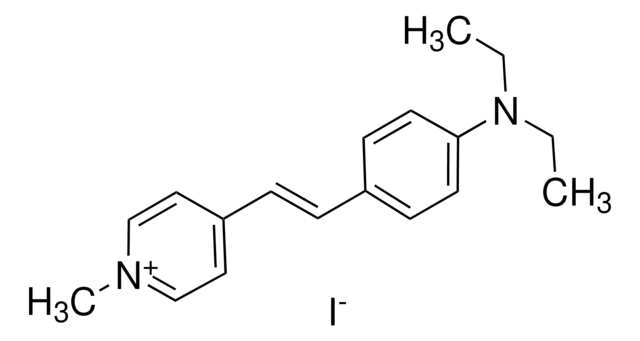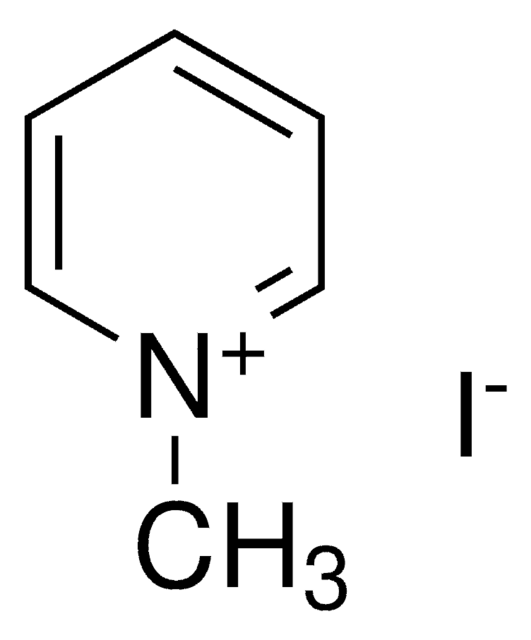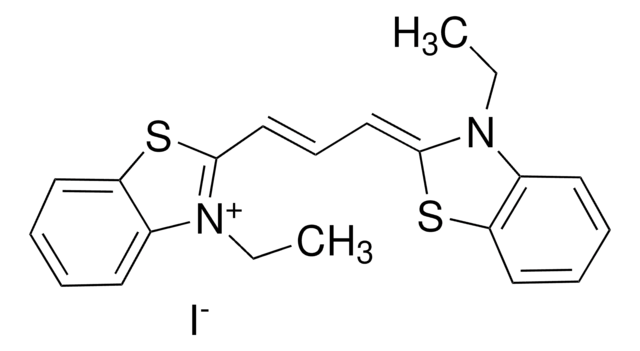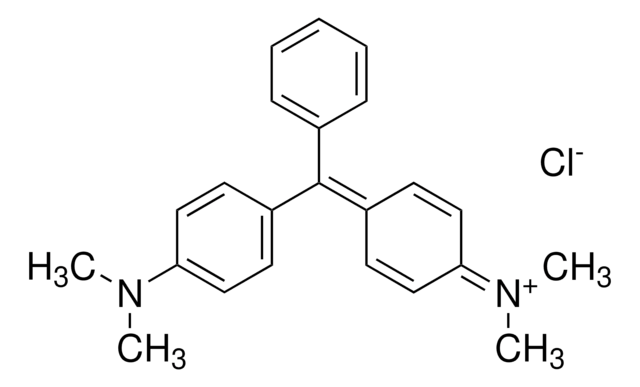280135
2-[4-(Dimethylamino)styryl]-1-methylpyridinium iodide
Dye content 95 %
Synonym(s):
2-Di-1-ASP
About This Item
Recommended Products
form
solid
composition
Dye content, 95%
mp
280 °C (dec.) (lit.)
λmax
466 nm
fluorescence
λex 466 nm; λem 504 nm in methanol
λex 475 nm; λem 589 nm in methanol
SMILES string
[I-].CN(C)c1ccc(cc1)\C=C\c2cccc[n+]2C
InChI
1S/C16H19N2.HI/c1-17(2)15-10-7-14(8-11-15)9-12-16-6-4-5-13-18(16)3;/h4-13H,1-3H3;1H/q+1;/p-1
InChI key
XPOIQAIBZGSIDD-UHFFFAOYSA-M
Looking for similar products? Visit Product Comparison Guide
General description
Application
signalword
Warning
hcodes
Hazard Classifications
Eye Irrit. 2 - Skin Irrit. 2 - STOT SE 3
target_organs
Respiratory system
Storage Class
11 - Combustible Solids
wgk_germany
WGK 3
flash_point_f
Not applicable
flash_point_c
Not applicable
ppe
dust mask type N95 (US), Eyeshields, Gloves
Choose from one of the most recent versions:
Certificates of Analysis (COA)
Don't see the Right Version?
If you require a particular version, you can look up a specific certificate by the Lot or Batch number.
Already Own This Product?
Find documentation for the products that you have recently purchased in the Document Library.
Customers Also Viewed
Articles
Fluorescence quenching microscopy visualizes 2D materials like graphene and MoS2 rapidly, inexpensively, and with high fidelity.
Graphene is the building block for carbon nanomaterials with different dimensionalities.
Our team of scientists has experience in all areas of research including Life Science, Material Science, Chemical Synthesis, Chromatography, Analytical and many others.
Contact Technical Service![trans-4-[4-(Dimethylamino)styryl]-1-methylpyridinium iodide Dye content 98 %](/deepweb/assets/sigmaaldrich/product/structures/416/722/5d59b6c3-5f2d-4396-a721-5cb82ba7038c/640/5d59b6c3-5f2d-4396-a721-5cb82ba7038c.png)
![4-[4-(Dimethylamino)styryl]pyridine 95%](/deepweb/assets/sigmaaldrich/product/structures/225/605/ad18cc93-9d43-467b-8618-105948f9692b/640/ad18cc93-9d43-467b-8618-105948f9692b.png)












